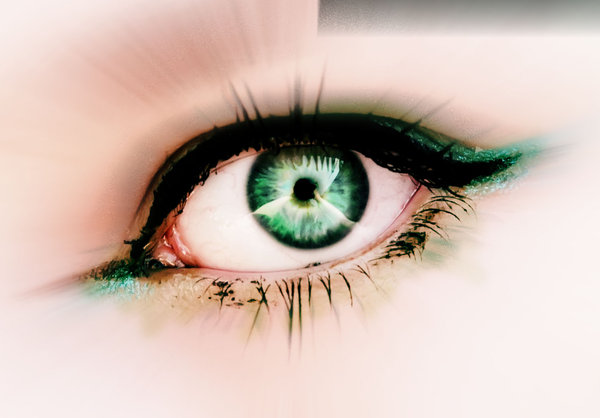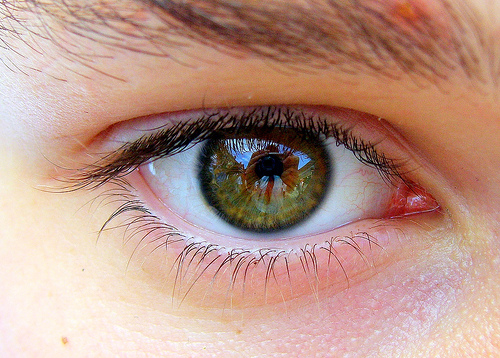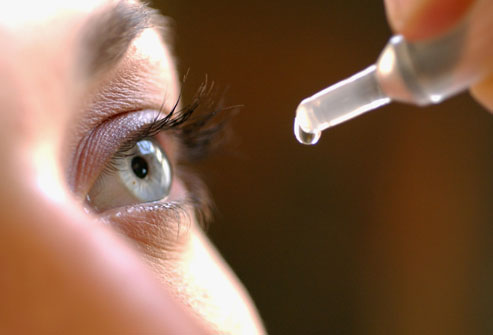
There are many myths related to eye, eye sight, vision, exercise etc. For example, watching a screen for longer time can harm your eyes or eating carrots will improve your eye sight. Some people prefer to read in bright light as dim light can weaken their eye sight. However, none of these myths are true. The impact of these myths is needed to be debunked. Rather if you find and apply the truth, your life will easier to deal with like you can enjoy reading in dim light while giving others present in the room a pleasant sleep.
Watching a screen for long time is harmful for eyes
Now this is a very common myth about eye exercise. My mother had been advising me to not to stare at TV screen for long time as it will affect my eye sight and I will be more prone to eye sight issues. The truth to dispel this myth is staring at computer screen or TV screen will only strain your eyes. It will not hurt or affect your eye sight. Dr. Theodore Lawwill of the American Academy of Ophthalmology has supported this fact that watching TV or looking at computer screens does not alter your eye sight. This is true for kids too. Kids are likely to watch TV with less distance because it helps them to locate the correct position of objects in the picture. The science behind this myth is watching anything constantly for longer time tends to put pressure on the eye muscles. This makes the muscles fatigued and ache. But your eye vision remains intact. Try to blink your eyes or put them to rest to keep them lubricated.
Eye exercises can correct vision problems
Millions of people are suffering from vision problems like short sightedness, farsightedness or astigmatism. They tend to correct these issues by doing specific eye exercises. However, this is also a myth that doing eye exercises can correct vision problems. The scientific reason to debunk this myth is given in the book The Well Informed Patient’s Guide to Cataract and Other Eye Surgery written by Dr. Mark Speaker of the New York Eye and Ear Infirmary and Karyn Fieden. They have clearly said that eye exercises might be useful in the case of strabismus or cross-eyes. According to them, eye exercises can correct only those vision problems which are caused due to the weakness or some abnormalities in the eye muscles like cataract or glaucoma but not in the case of shortsightedness, farsightedness or astigmatism. Therefore, surgeries can be helpful in correcting vision problems.
Specific diets can correct eye diseases
This is another myth that to keep eye diseases like cataract and glaucoma at bay, eat as much carrots as you can. According to Arnold Bender, vice president of International Union of Food Science and Technology in Health or Hoax, following or eating a specific diet will not help you in correcting eye diseases like myopia or hyper-myopia. Vitamin A, which is abundant in carrots, can help you to see better in dim light or at night but it will not correct your vision. Poor vision is never ever related to the food you eat. It is also a fact that eating too much carrot can harm you by causing itchy skin, poor vision, loss of appetite and hair, irregular menstruation and joint pain. Rather, you should eat dark green or yellow leafy vegetable and fruits which are also loaded with vitamin A. They can keep your eyes healthy.
Wearing glasses or contact lenses for long durations is harmful
You wear glasses or contacts to correct your vision problem. This is another myth about eye exercises that using glasses or contacts for a longer time is harmful for the eyes. The fact behind this myth is if you work wearing glasses or contacts for longer time, your eyes get fatigued and painful. They start to ask for some rest. This is a simple phenomenon that putting strain on your eye muscles can get them tired but not hurt. You can wear glasses as long as you want but in case of contacts, they can only harm your eyes if they get dirty or broken. Make sure you always use clean contacts. Also if you are working continuously, do not forget to blink your eyes for several times to keep them lubricated. Keep your eyes closed for few seconds to avoid any trace of tiredness.
Reading in dim light or moving vehicles will affect eye vision
In childhood, I was not allowed to read any book inside moving vehicles. Also, I had to put bright lights on in my room to read any book. I did this because of a myth that reading in dim light or moving vehicles will make you blind or cause serious damage to the eye sight. It is a myth because when you adjust your eyes to awkward reading positions like while lying down on the couch, the eye muscles get strained. Gradually, they become red because of the pressure on them and start aching. This pain or strain on muscles makes you think that your eye sight is getting affected and prolonged exposure to this habit will make you blind later on. This myth can also be destroyed strongly by going through The Dictionary of Medical Folklore‘s author Carol Ann Rinzler’s statement that wrong eye positions can affect your vision comfort but they will never harm your eyes. Adjust to the appropriate position like sitting on a chair or sitting up straight on the bed and your eyes will not hurt even if you read book in dim light or moving vehicles.
Using eye drops can correct your vision
Any person with common sense can dismiss this myth at the drop of a hat. Using eye drops can never ever correct or improve your eye problems. Eye drops are useful only then when your eyes are tired and not allowing you to work further. Like every organ in our body, eyes also need rest. But sometimes we forget to put them on hold which causes strain on eye muscles. This strain feels you in the form of redness and dryness of your eyes. Eye drops can relax eye muscles. They have soothing properties to do so. Next time you buy a bottle of eye drop, make sure it is to give your eyes rest and not for correcting your vision problems.
Glaucoma related myths
Glaucoma happens because of increased pressure on eye balls which may lead to blindness. The reason of glaucoma is still not known but myths have already started their ways to patients. Ideas like: with increase in age glaucoma worsens, specific diets help in dealing with glaucoma, people with 20/20 vision cannot have glaucoma, eyes feel different if you suffer from glaucoma or canola oil causes glaucoma, are nothing but complete myths.
It is true that with age, glaucoma increases but anyone in younger age group can also suffer from glaucoma. African-Americans are more prone to glaucoma regardless of their age. People with central vision or 20/20 vision can also have glaucoma if it is far advanced. Glaucoma is also called as a “sneak thief of vision” but it never hurts eyes and there are no records of proving the contribution of canola oil towards causing glaucoma. Diet does not play any part in correcting any kind of eye problems. So, now almost all the myths related to glaucoma are debunked right in front of you.
Crossing eyes will turn you cross eyed
Dr. Eugene R. Folk, former co-director of the Pediatric Ophthalmology Clinic at the University of Illinois has blown away this myth by saying that crossing eyes will make you less prone towards becoming cross-eyed. Cross-eyes happen only then when tiny eye muscles of any one eye get deformed and lose their connection with the brain. In this situation, one of the eyes becomes affected and the person suffers with cross-eyes or strabismus. Children are less supposed to develop strabismus. Strabismus must not be ignored as the affected eye might lose its sight forever. For critical cases, surgeries are required. The funny thing is, I was also a believer of this myth but now mine’s is also debunked. Cheers!
Eye balls can change their shape
Not a very common one but the above is also a myth related to eye exercises. People who say that eye balls change their shape are either trying to sell their glasses or trying to make a fool out of you. If we peep through the skull structure, it is stone hard and cannot be altered once you achieve adulthood. Your eye balls are located firmly in solid eye sockets made from bones. If eye balls start altering their shapes, eye sockets will also have to follow but it is just not possible in normal situations unless you face an accident. In normal conditions, eye sockets or eye balls never change their shape, size or position. Next time when someone tries to make fool out of you with this myth, stare in his or her eyes located in eye sockets and destroy the myth.


